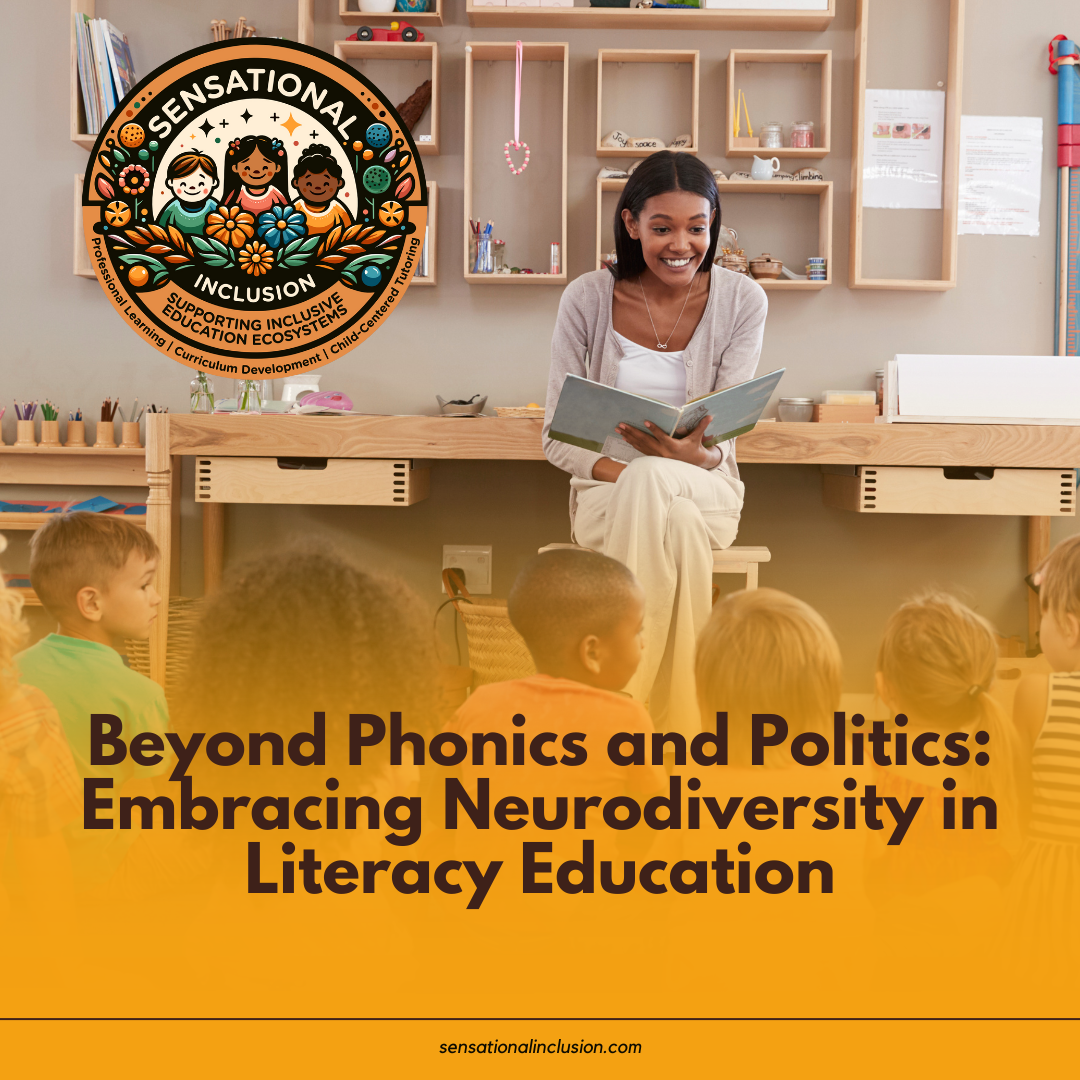Introduction
The debate between the Science of Reading (SOR) and Balanced Literacy is not just a theoretical dispute; it’s a crucial conversation about aligning teaching methods with our neuroscientific understanding of learning. This exploration matters because the future of literacy education and the success of diverse learners hinge on our ability to integrate these insights effectively. The Neurological Perspective in Literacy Wars
The Neurological Perspective in Literacy Wars
SOR’s alignment with neurological research, particularly in terms of phonemic awareness’s impact on brain circuits, is significant. It validates SOR’s effectiveness for many learners. However, the critical concern here is that relying solely on this approach may fail to address the diverse neural learning styles present in a typical classroom, potentially leaving some students, especially those with neurological differences, at a disadvantage.
For neurodivergent students, such as those with dyslexia, autism, or ADHD, the SOR approach can be both beneficial and limiting. Neuroscientific studies, like those by Dr. Fumiko Hoeft, show that dyslexic brains process phonemic information differently, suggesting the need for varied instructional strategies beyond standard phonics. This highlights the necessity of adapting SOR methodologies to meet the unique learning profiles of these students.
Beyond Phonics: Cognitive Diversity and Reading
Understanding literacy as a multi-faceted cognitive process is crucial. It signifies that a singular method like SOR might not cater to all, especially those with dyslexia or students learning English as a new language. This recognition is vital for inclusive education, ensuring that no student’s learning needs are overlooked.
The cognitive diversity in classrooms is vast. Educational psychologist Dr. Scott Barry Kaufman emphasizes the need to consider this diversity in teaching methods. For instance, some students may benefit more from visual or kinesthetic learning approaches, which SOR might not adequately provide.
The Neurological Oversimplification of Educational Realities
The oversimplification in SOR’s approach highlights the risk of a one-size-fits-all methodology. This matters because it can lead to ineffective teaching strategies that don’t address individual learning challenges, ultimately impacting students’ literacy development and self-esteem.
For neurodivergent students, this oversimplification can be particularly detrimental. Research by Dr. Mary Helen Immordino-Yang highlights how emotional and social aspects of learning are integral to cognitive development, areas that may not be fully addressed by the SOR approach.
The Role of Neuroscience in “Right to Read” and “Sold a Story”
These narratives, while influential, often miss the complexity of brain-based learning. The significance lies in recognizing that effective literacy instruction requires diverse methods to engage different neural pathways, a crucial factor for educators designing inclusive curricula.
A multifaceted approach to literacy, as advocated by literacy expert Dr. Nell Duke, is necessary to address the varied needs of neurodivergent learners. This approach involves combining phonics with strategies that cater to different learning styles and cognitive strengths.
The Nuance of Literacy Development: A Neurological View
Understanding literacy through a neurological lens is essential for developing flexible, personalized teaching methods. This matters because it supports the cognitive and emotional development of students, fostering a more profound love for learning and better academic outcomes.
Adapting literacy instruction to accommodate neurodiversity, as suggested by neuroscientist Dr. Joanna Christodoulou, involves integrating various teaching techniques, including multimodal instruction, to support the wide range of learning preferences and cognitive abilities in the classroom.
Conclusion
The intersection of neuroscience and literacy education underscores the necessity for methods that recognize cognitive diversity. This is crucial because the stakes are high: the future of literacy education and the equitable development of all learners depend on our ability to adapt our teaching methods to diverse neurological needs.
I challenge educators, researchers, and policymakers to consider the neurological dimensions of literacy education. This is vital because the success of our educational systems and the fulfillment of each student’s potential depend on our willingness to move beyond rigid methodologies and embrace inclusive, adaptive teaching strategies.
References and Further Reading
- Shaywitz, S. (2003). “Overcoming Dyslexia.”
- Wolf, M. (2007). “Proust and the Squid: The Story and Science of the Reading Brain.”
- Spear-Swerling, L. (2019). “The Power of RTI and Reading Profiles.”
- Paris, D. (2012). “Culturally Sustaining Pedagogy.”
- Pearson, P.D. (2017). “Research Foundations for Wide Reading.”
- Hoeft, F. (2011). “Neural Basis of Dyslexia.”
- Kaufman, S.B. (2013). “Ungifted: Intelligence Redefined.”
- Immordino-Yang, M.H. (2016). “Emotions, Learning, and the Brain.”
- Duke, N.K. (2017). “Balanced Literacy for English Language Learners, K-2.”
- Christodoulou, J. (2014). “The Role of Neuroscience in Literacy Instruction.”

